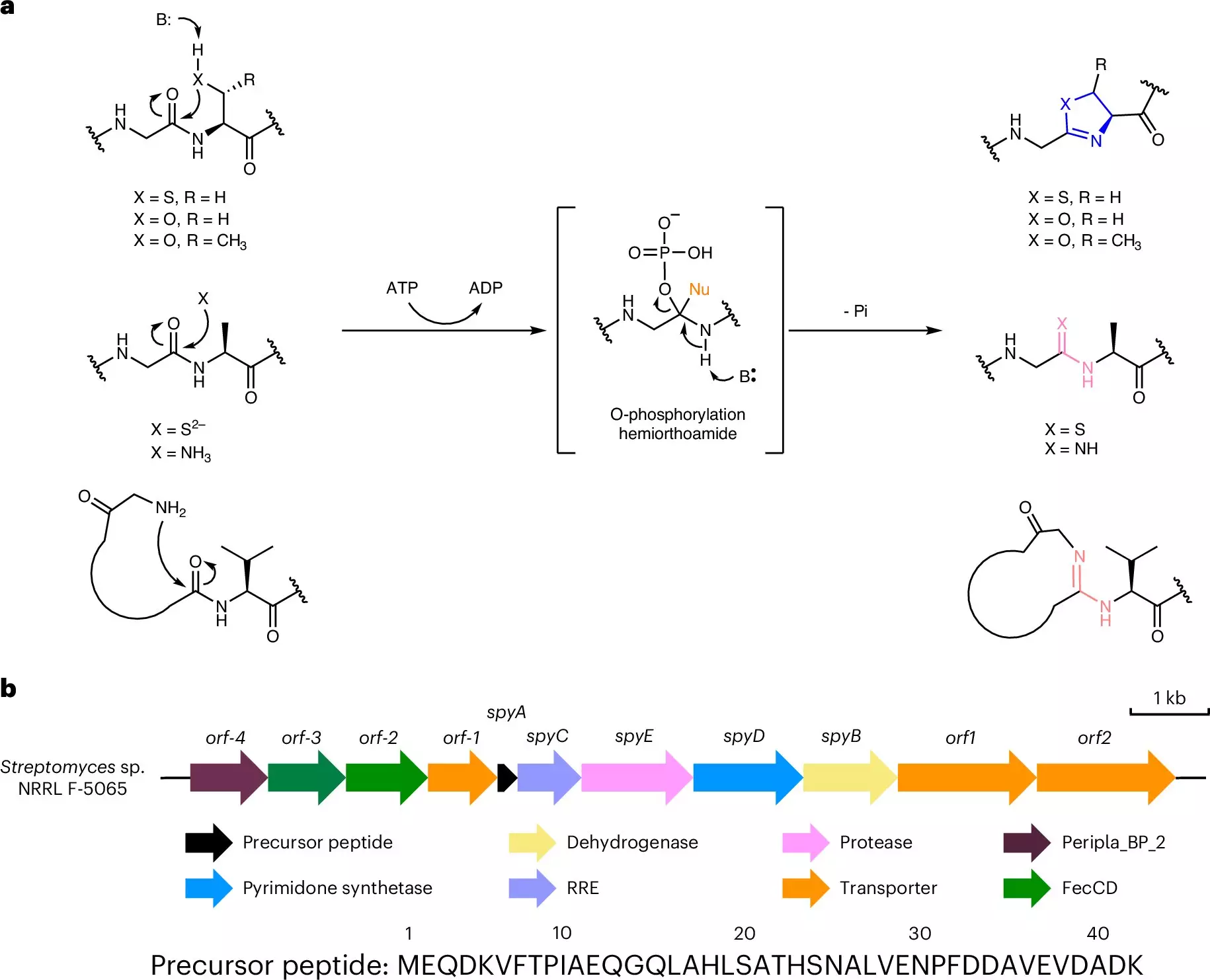The realm of molecular biology is experiencing a groundbreaking moment, as a recent study reveals the possibility of creating biohybrid molecules—innovative constructs that merge DNA’s homing capabilities with the versatile functionalities of proteins. These advancements, reported by researchers in *Nature Chemical Biology*, illuminate new pathways to therapeutic development, paving the way for potentially revolutionary precision drugs. The work is driven by serendipity and scientific diligence, showcasing how unexpected findings can catalyze profound innovations in medical science.
The Synergy of Nucleic Acids and Amino Acids
Historically, chemists have grappled with the challenge of integrating two essential biological components: nucleic acids (the building blocks of DNA and RNA) and amino acids (the constituents of proteins). Satish Nair, a prominent biochemistry professor at the University of Illinois Urbana-Champaign, along with postdoctoral researcher Zeng-Fei Pei, has led efforts to fuse these components, thereby unlocking therapeutic potential. As noted by Nair, if a complex protein can be engineered to have a DNA moiety, which guides it to specific cellular locales, the scope of possible drugs can be broadened significantly. Such precision enables real-time interruption of disease processes, such as the silencing of aberrant gene transcription or inhibiting the activity of harmful noncoding RNA.
A Serendipitous Discovery and Collaborative Efforts
The initial breakthrough was borne out of unexpected circumstance. While Nair and his team were investigating proteins that bind metals, they fortuitously encountered research from the John Innes Centre in Norwich, England, which reported a DNA-protein hybrid molecule created by bacteria. This chance discovery prompted a collaboration between American and British scientists, leading them to dissect the mechanisms behind this hybridization process. Their joint efforts not only confirmed the existence of the DNA-protein hybrid but also advanced understanding of the natural processes that underpin its formation.
This collaboration epitomizes how scientific advancement often relies on the confluence of diverse expertise and perspectives, highlighting the collective endeavor inherent in modern scientific research.
One of the most significant revelations from this research is the potential to harness bacterial systems to produce biohybrid molecules at a scale previously deemed unattainable. Traditionally, the synthesis of such constructs involved extensive chemical methods that were time-intensive and not amenable for high-volume production. With the newfound understanding of bacterial capabilities, laboratories can potentially bypass labor-intensive techniques, thereby accelerating the drug discovery pipeline.
Nair describes the situation succinctly; while existing methods have demonstrated proof of concept, scaling them for mass production presents a formidable challenge. By employing bacteria like *E. coli*, the production process could become more efficient and cost-effective, opening new avenues for therapeutic applications.
The Molecular Mechanisms Unveiled
The research team elucidated the specific enzymes responsible for the conversion of peptides into DNA-protein hybrids. The first enzyme, YcaO, induces modifications that transform peptides into cyclic structures akin to the bases in DNA and RNA. Following this, a protease truncates the modified peptide to yield a fully functional nucleobase-protein hybrid. This discovery not only provides insight into the molecular architecture of biohybrids but also suggests accessibility for laboratory processes and biotechnological applications.
Utilizing just three core ingredients—the original peptide and the two enzymes—the researchers demonstrated the potential for hybrid formation within a test tube, thus indicating feasibility for broader applications. The implications of this technology are profound, as it fosters the potential to create hybrids that can interact with any region of the genome or specific RNA molecules, all critical for effective disease intervention.
The implications of this research extend far beyond the laboratory. With this innovative approach, researchers can delve into previously uncharted therapeutic territories, targeting complex diseases with greater specificity and efficacy. As Nair puts it, “now, we’re off to the races,” indicating a readiness to forge ahead into a new era of molecular therapeutics.
The integration of molecular biology and synthetic biology is poised to change the landscape of therapeutic development. By leveraging the natural capabilities of bacteria for the synthesis of biohybrid molecules, medical science may soon witness pioneering treatments that can precisely target genetic anomalies and their resultant pathologies.
The research acts as a catalyst for future endeavors, inspiring a generation of scientists to rethink the possibilities within bioengineering and therapeutic development. The horizon looks promising, as the fusion of DNA and protein holds the potential to revolutionize how we approach treating diseases at the molecular level.


Leave a Reply